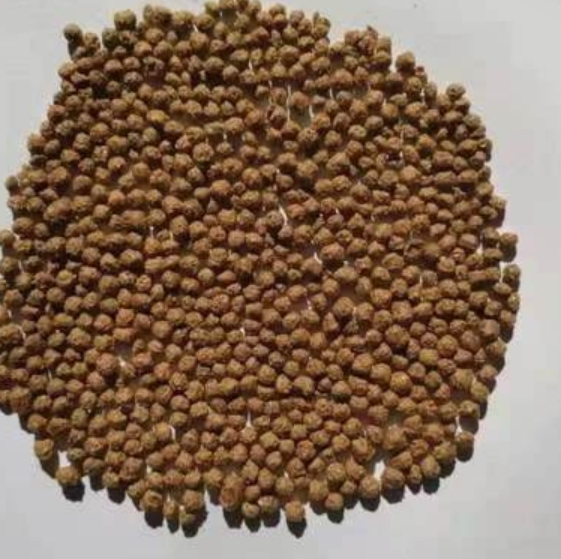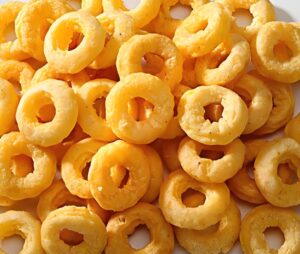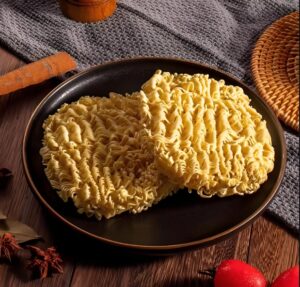<h1>Classifications of Fish Feed: A Comprehensive Guide for Aquaculture Professionals</h1>Introduction to Fish Feed Classifications
Fish feed is a critical component in the aquaculture industry, supporting the growth, health, and sustainability of fish farming operations worldwide. With the global demand for seafood rising, understanding the classifications of fish feed helps businesses optimize production, reduce costs, and ensure compliance with international trade standards.
extruder machine for fish feed
ToggleIn this article, we explore the various ways fish feed is categorized, drawing from key factors such as fish species, life stages, physical forms, and nutritional content. Whether you’re a fish feed manufacturer, exporter, or aquaculture farmer, this guide provides valuable insights to enhance your B2B strategies and decision-making processes.
By classifying fish feed effectively, professionals can select the most appropriate options to improve feed efficiency, minimize waste, and promote environmental sustainability. Let’s dive into the main classifications to uncover how these categories drive success in foreign trade and aquaculture.
Major Classifications of Fish Feed
Fish feed can be classified in several ways, each serving specific needs in aquaculture. These classifications are based on biological, practical, and commercial factors, allowing for tailored solutions in fish farming and international trade.
Classification Based on Fish Species
One of the primary ways to classify fish feed is by the type of fish species it targets. This ensures that the feed meets the unique dietary requirements of different fish, which vary based on their natural habitats and nutritional needs.
For freshwater fish, such as tilapia or catfish, feeds are formulated with ingredients like plant-based proteins and grains. These feeds are often more affordable and widely available in B2B markets, making them popular for large-scale farming in regions like Asia and Africa.
Marine fish feeds, designed for species like salmon or sea bass, typically include higher levels of omega-3 fatty acids and marine-derived proteins. Exporters in the foreign trade sector must consider regulations, such as those from the EU or FDA, to ensure these feeds meet quality standards for international shipments.
Other specialized feeds exist for ornamental fish or hybrid species, incorporating micronutrients to enhance color and vitality. This classification helps B2B buyers select feeds that align with their target markets, improving overall farm productivity.
Classification Based on Life Stages
Fish feed is also categorized by the developmental stage of the fish, as nutritional needs change from hatching to maturity. This approach optimizes growth rates and health outcomes in aquaculture operations.
Fry feed, for newly hatched fish, consists of fine particles or micro-pellets rich in proteins and essential amino acids. It’s crucial for early survival, and manufacturers often produce it in high volumes for export to regions with expanding hatcheries.
Fingerling feed targets juvenile fish, providing a balance of proteins, vitamins, and minerals to support rapid growth. In B2B contexts, this category is in demand for pond-based farming, where feeds are customized to local water conditions and fish genetics.
Adult fish feed focuses on maintenance and reproduction, with formulations that include energy-dense ingredients to sustain larger fish. For trade professionals, this classification involves sourcing sustainable ingredients to meet global certifications like ASC or BAP.
Broodstock feed, for breeding fish, emphasizes reproductive health with added nutrients like vitamins E and C. This ensures high-quality eggs and fry, making it a key product in international aquaculture supply chains.
Classification Based on Physical Form
The physical form of fish feed plays a vital role in how it’s consumed and digested, affecting feed efficiency and water quality in fish farms. This classification is particularly relevant for B2B logistics, as different forms impact packaging and transportation costs.
Pellet feeds are compressed into small, uniform shapes, making them easy to handle and less wasteful. They are ideal for commercial operations and are a top export item due to their long shelf life and precise nutrient delivery.
Flake feeds, often used for smaller or ornamental fish, dissolve quickly in water and are packed with flavors to attract fish. In foreign trade, these are popular for aquarium suppliers, with lightweight packaging reducing shipping expenses.
Powder feeds consist of finely ground ingredients, suitable for very young fish or as a base for custom mixes. Manufacturers in the B2B sector value this form for its versatility in blending with other additives for specialized markets.
Granule feeds offer a middle ground, with larger particles that sink slowly. This classification is favored in sustainable aquaculture for minimizing surface pollution, and it’s commonly traded in bulk for large-scale operations.
Classification Based on Nutritional Composition
Nutritional content is another key classification, focusing on the ingredients and balance of macronutrients, micronutrients, and additives. This helps in addressing specific health and growth challenges in fish farming.
Plant-based feeds, derived from sources like soy or corn, are cost-effective and sustainable options. They appeal to eco-conscious B2B buyers in Europe and North America, where demand for non-GMO feeds is growing.
Animal-based feeds incorporate fishmeal or poultry by-products for high protein levels. These are essential for carnivorous fish species and dominate trade in regions with abundant marine resources, though sustainability concerns are driving innovations.
Synthetic or fortified feeds include added vitamins, minerals, and probiotics to boost immunity. In global markets, this category is expanding due to its role in disease prevention, with exporters emphasizing lab-tested formulations.
Balanced feeds combine various sources to meet dietary standards, ensuring optimal growth without excess waste. For foreign trade professionals, understanding nutritional labels is key to complying with import regulations and meeting customer specifications.
Other Considerations in Fish Feed Classification
Beyond the main categories, several other factors influence fish feed classification, including buoyancy, additives, and environmental impact. These aspects are increasingly important in B2B contexts for competitive advantage.
Floating vs. sinking feeds are classified by how they behave in water, with floating options reducing waste for surface-feeding fish. In international trade, sinking feeds are preferred for deeper ponds, offering better control over feeding regimes.
Medicated feeds, containing antibiotics or antiparasitics, are used to treat diseases and classified based on regulatory approvals. Exporters must navigate strict guidelines from bodies like the WHO to ensure safe global distribution.
Sustainable feeds, made from alternative proteins like insects or algae, are gaining traction for their eco-friendly profile. This classification aligns with B2B trends toward green practices, helping companies access premium markets.
Cost and availability also play roles, with classifications based on economic factors like bulk pricing or seasonal ingredients. For aquaculture businesses, this means selecting feeds that balance quality and affordability for long-term profitability.
Frequently Asked Questions
Below, we address common queries from professionals in the fish feed industry to provide additional clarity on classifications.
What is the most common classification of fish feed? The most common is based on fish species, as it directly aligns with the dietary needs of specific fish like tilapia or salmon, making it essential for targeted aquaculture practices.
How does fish feed classification impact export regulations? Classifications help ensure compliance with international standards, such as those from the FAO, by specifying ingredients and forms that meet safety and sustainability criteria for global trade.
Why are life stage classifications important for fish farmers? They allow for precise nutrient delivery at each growth phase, improving survival rates and efficiency, which is crucial for maximizing returns in commercial operations.
What are the benefits of plant-based fish feeds in B2B markets? They offer a sustainable, cost-effective alternative to traditional feeds, appealing to buyers focused on environmental responsibility and reducing dependency on marine resources.
How can businesses choose the right physical form of fish feed? Consider factors like fish behavior, water conditions, and feeding systems; for example, pellets are ideal for automated feeders in large-scale exports.
Are there emerging trends in fish feed classifications? Yes, trends toward sustainable and fortified feeds are rising, driven by consumer demand for eco-friendly products and advancements in nutritional science.
Conclusion
In summary, understanding the classifications of fish feed is essential for aquaculture professionals and B2B traders to enhance efficiency, sustainability, and market competitiveness. From species-specific formulations to innovative nutritional compositions, each category offers unique advantages that can drive business growth. By applying this knowledge, stakeholders can make informed decisions, foster innovation, and contribute to a thriving global aquaculture industry. As demand continues to evolve, staying updated on these classifications will ensure long-term success in foreign trade and fish farming.









